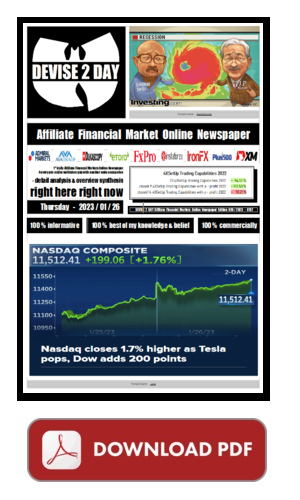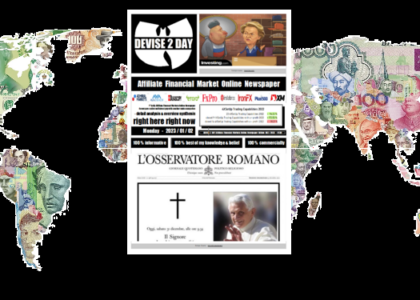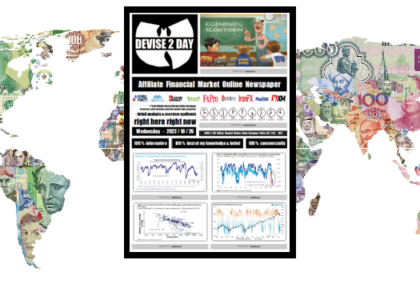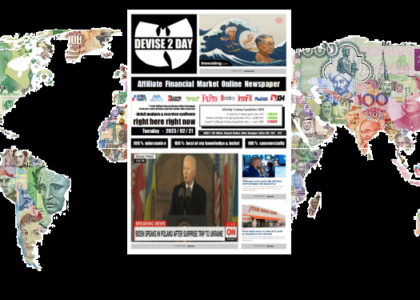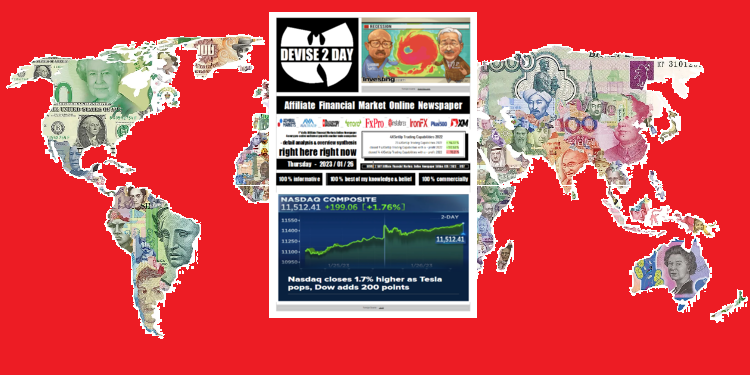
2023/01/26 (157.020) Technical Analysis – … & CBOT_MINI-YM1!
Wall Street Extends Gains On Thursday,
After New Economic Data Showed That US Growth Slows
In General, US Wall Street Seems To Be Somewhat Overvalued At The Moment When It Comes To Company Valuations,
While The US Yield Curve Anticipates A Recession And Some Are Already Betting On Falling Interest Rates For The End Of 2023
Personally, I don’t (yet) expect a recession. Because we still haven’t had any negative growth published for the past quarter compared to the same quarter last year. Rather, stagflation is likely to persist in 2023 – higher inflation than GDP. So that the FED will probably not do anything more after 1.2 further 25 basis points hike steps willy-nilly until the end of 2023!? No more hikes let alone rate cuts?! A slightly different opinion than most of my colleagues are currently publishing. Because many are assuming interest rate cuts by the end of 2023. Which should accelerate the already overpriced US stock market, US WallStreet, even higher. But it won’t happen as I don’t expect the Fed to cut rates. So we’re still maintaining our long 4XSetUp; very much in line with George Soros theory of reflexivity (and his assumption that stock markets always tend to be either overvalued or undervalued). And since the US yield curve is a real alternative in historical comparison to the stock market; it will also be a rocky road up for the Dow Jones in 2023. But at least upwards! And not down like 2022! So that, also thanks to the last major indicators, I am realistically optimistic, with both feet on the ground, for the Dow Jones.
The Yield Curve Model: Strongly Overvalued
When short term (3-month) Treasury yields are higher than long term (10-year) yields, it is a bearish signal that is almost always followed by economic recession. Currently, the 10-year Treasury rate is 3.48% and the 3-month is 4.72%, for a spread of -1.24%. Since 1950 the historic average spread has been 1.51%. The current spread is 2.2 standard deviations above the historic trend. I consider this Strongly Overvalued.
The Buffett Indicator Model: Fairly Valued
The Buffett Indicator is the ratio of the total value of the US stock market versus the most current measure of total GDP. Currently, the total US stock market is worth $42.6T, the current GDP estimate is $26.0T, for a Buffett Indicator measure of 164%. This is 0.9 standard deviations above the historic trend of 129%. I consider this Fairly Valued.
The Price/Earnings Model: OvervaluedThe PE Ratio Model tracks the ratio of the total price of the US stock market versus the total average earnings of the market over the prior 10 years (aka the Cyclicly Adjusted PE or CAPE). Currently, the current CAPE ratio is 28.6. This is 42% above the long-term historic trend CAPE of 20.2, or approximately 1.1 standard deviations above trend. I consider this Overvalued.
The Interest Rate Model: Fairly Valued
Low interest rates should generally drive higher equity prices. This model examines the relative S&P500 position given the relative level of interest rates. Currently, the current S&P500 ($3,973) is currently 0.9 standard deviations above its historical trend. The 10-year US Treasury interest rate is 3.48, about 0.8 standard deviations below trend. Netted together, this composite model suggests the total market is Fairly Valued.
S&P500 Mean Reversion Model: Fairly Valued
An extremely straightforward model stipulating that at some point, eventually, the S&P500 will tend to return towards its historic trend line. Currently, the S&P500 is at $3,973, or approximately 31% above its exponential historic trend line. I consider this Fairly Valued.
US GDP Growth Slows To 2.1% in 2022 – So 10-Year Treasury Yields Climb After GDP Data While DXY Holds Below 102
The US GDP expanded by 2.1% in 2022, slowing from a 5.9% expansion in 2021 as the economy returned to a more normal pace of growth after pandemic-related disruptions in the previous two years. In 2022, the positive contributions came from consumer spending, exports, private inventory investment, and nonresidential fixed investment while decreases were reported in residential fixed investment and federal government spending. Imports increased.
The yield on the US 10-year Treasury note rose to the 3.5% mark, extending the rebound from the four-month low of 3.38% touched on January 18th as a batch of fresh economic data underscored the resilience of the US economy and added leeway for the Federal Reserve to extend its hawkish momentum. The US GDP expanded by 2.9% in the fourth quarter, beating market expectations of a 2.6% increase and extending the 3.2% rise in the previous period with growth noted in consumer spending, government expenditure, and inventory investment. Durable goods orders also expanded past expectations, while initial unemployment claims unexpectedly fell to nine-month lows. Still, money markets expect the Federal Reserve to raise its key rate by a softer 25bps next week and end its tightening campaign at 5% in March before cutting the rate in November, compared to the central bank’s pledge of a 5.25% terminal rate for the whole year.
The dollar index held below 102 on Thursday, hovering near its lowest level in almost eight months, on expectations of less aggressive policy tightening from the FED and worries that a US recession might be near even though recent data showed the economy remains resilient. The latest data showed the American economy advanced 2.9% in the last three months of 2022, while analysts expected a 2.6% growth. Still, more frequent data is pointing to a weakening economy and mixed corporate earnings suggest that the broader economy is facing headwinds. Meanwhile, the country’s eased inflation bolstered bets that the Fed would further slow down its rate hikes, with money markets now pricing an over 95% chance of a 25 basis point increase at the next policy meeting. Additionally, Fed Governor Christopher Waller said that upcoming moves and the forecasted decline in inflation brought policy close to being “sufficiently restrictive.”
Wall Street Extends Gains on Thursday
The Dow added 200 points, while the S&P 500 and Nasdaq 100 were up 1.1% and 1.7%, respectively, after US fourth-quarter gross domestic product growth beat estimates while corporate earnings turned mixed. The American economy advanced 2.9% in Q4 of 2022, while analysts expected a 2.6% growth, raising hopes that a soft landing for the economy is possible despite the Federal Reserve’s aggressive monetary tightening. Meanwhile, durable goods orders also exceeded expectations, while initial unemployment claims unexpectedly fell to nine-month lows. On the earnings front, tesla soared almost 11% after posting solid revenue and earnings and raised the forecasts for 2023. Among losers, IBM fell 4.5% on its announcement that it would cut jobs due to falling short of its annual cash target despite a revenue beat. Southwest Airlines slid 3.1% on warning of losses for the current quarter. Visa and Intel are due to post results after the bell.
good morning, good day, and/or good night
at whatever time, wherever you are !
right here right now :

